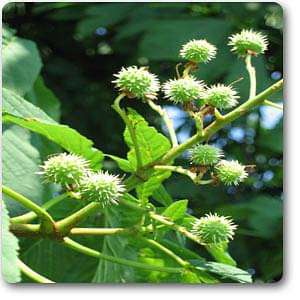
Horsechestnut - Plant
(MRP Inclusive of all taxes)
- Shipping ₹79 for entire order
- Dispatch in 7 days
- Country of origin: India

(MRP Inclusive of all taxes)
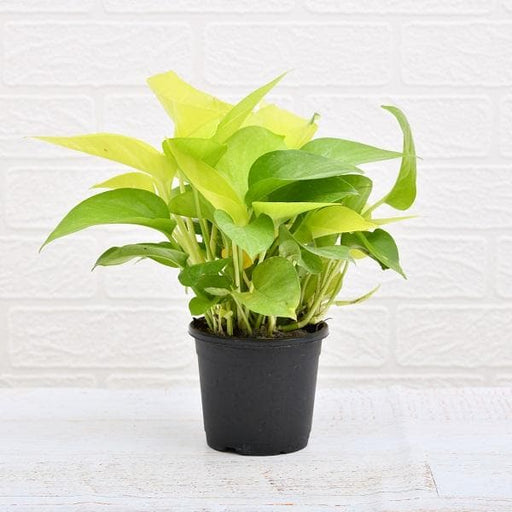 Save 29%
Save 29%
Air Purifier Money Plant with Pot The Air Purifier Money Plant, also known as Pothos or Epipremnum aureum, is a stunning indoor plant that...
View full details
 Save up to 15%
Save up to 15%
Peace Lily, Spathiphyllum - Plant The Peace Lily, scientifically known as Spathiphyllum, is a stunning houseplant celebrated for its elegant white...
View full details
 Save 25%
Save 25%
Jasminum sambac, Mogra, Arabian Jasmine - Plant Jasminum sambac, commonly known as Mogra or Arabian Jasmine, is a fragrant flowering plant...
View full details
 Save 18%
Save 18%
Combo Constituents Includes the Parijat Tree (Night-Flowering Jasmine), a culturally significant plant with fragrant flowers. Description The Pari...
View full details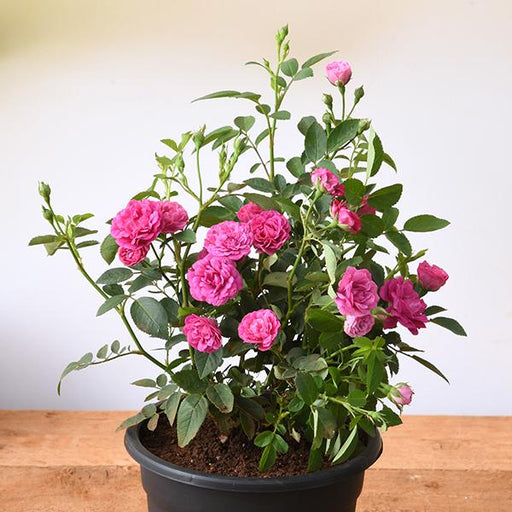
 Save 25%
Save 25%
Miniature Rose, Button Rose (Any Color) - Plant The Miniature Rose, also known as the Button Rose, is a charming and compact flowering plant that ...
View full details Save 25%
Save 25%
Damascus Rose, Scented Rose (Any Color) - Plant The Damascus Rose, also known as Rosa damascena, is a timeless symbol of beauty and romanc...
View full details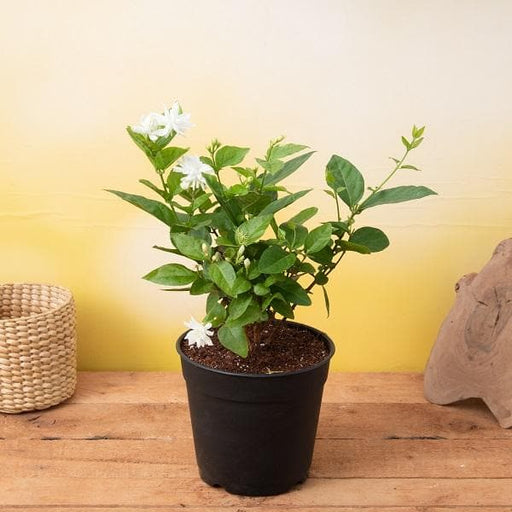
 Save 17%
Save 17%
Beautiful Fragrant Mogra, Arabian Jasmine Plant with Pot The Beautiful Fragrant Mogra, also known as Arabian Jasmine (Jasminum sambac), is...
View full details Save 15%
Save 15%
Pack of Vermicompost and Neem Cake for House Plants Transform your indoor garden with our premium Pack of Vermicompost and Neem Cake, spec...
View full details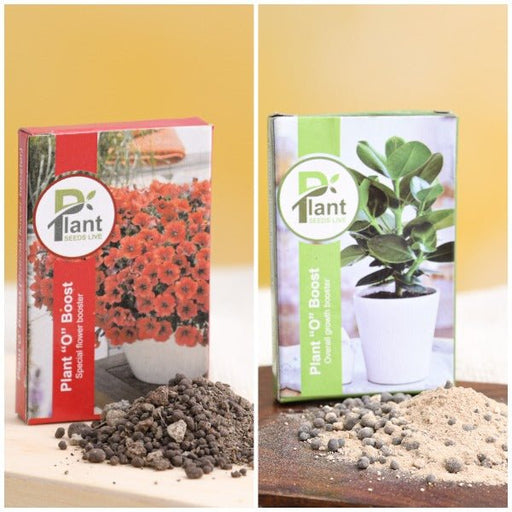
Pack of Plant Growth and Flower Boosters Unlock the full potential of your garden with our Pack of Plant Growth and Flower Boosters! This ...
View full details Save 38%
Save 38%
Combo of Jeevamrut and Neem Raksha for Easy Growth and Protection of Houseplants Transform your indoor garden with our exclusive combo of ...
View full details Save 22%
Save 22%
Plant Nutrients Kit (Pack of 16) for a Healthy Garden Transform your garden into a lush paradise with our Plant Nutrients Kit, featuring 1...
View full details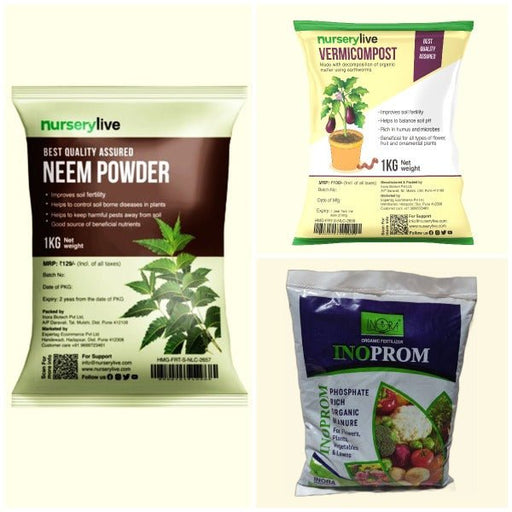 Save 16%
Save 16%
Combo of Top Plant Fertilizers Elevate your gardening game with our exclusive Combo of Top Plant Fertilizers, featuring two bags of premiu...
View full details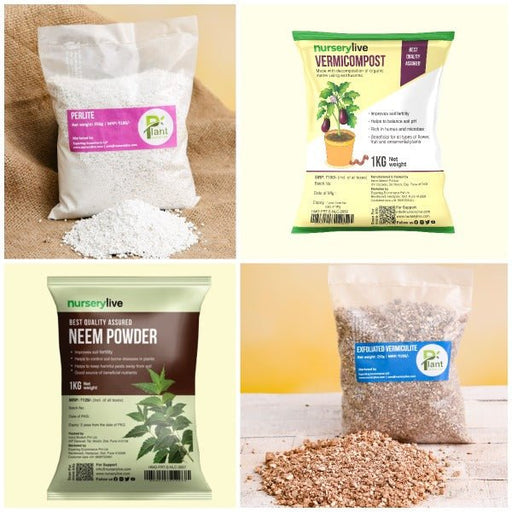 Save 24%
Save 24%
Pack of 4 Additives to Make Soil Healthy and Nutrient Rich Transform your garden into a thriving ecosystem with our Pack of 4 Additives de...
View full details Save 30%
Save 30%
Transform your gardening experience with our premium Combo of Perlite and Vermiculite. This unique blend is designed to enhance soil aeration and ...
View full details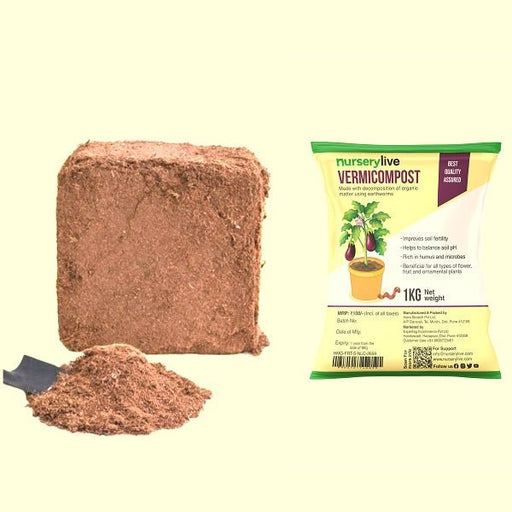 Save 27%
Save 27%
Combo of 2 Vermicompost and Cocopeat - Enrich Your Soil Naturally! Transform your garden into a thriving ecosystem with our Combo of 2 Ver...
View full details
 Save 35%
Save 35%
Best 6 Plants for Perfect Indoor Garden Transform your living space into a lush oasis with our curated collection of the Best 6 Plants for a...
View full details
 Save up to 50%
Save up to 50%
Mini Succulent Garden Pack Transform your space with our Mini Succulent Garden Pack, featuring a delightful collection of 4 any variety beautiful s...
View full details
 Save 30%
Save 30%
5 Best Fragrant Plants Transform your garden or indoor space into a fragrant paradise with our curated selection of the 5 Best Fragrant Plants. Th...
View full details
 Save 24%
Save 24%
Set of 2 Bonsai Looking Grafted Adeniums Transform your indoor or outdoor space with our exquisite Set of 2 Bonsai Looking Grafted Adenium...
View full details Save 45%
Save 45%
Top 4 Die Hard Succulents Pack Transform your indoor or outdoor space with our Top 4 Die Hard Succulents Pack, featuring a curated selecti...
View full details
 Save 30%
Save 30%
5 Best Indoor Plants Pack Transform your living space into a lush oasis with our '5 Best Indoor Plants Pack.' This carefully curated collection fe...
View full details
 Save 25%
Save 25%
Set of 4 Evergreen Air Purifier Plant Pack Transform your indoor space into a lush, green oasis with our Set of 4 Evergreen Air Purifier Pla...
View full details| SrNo | Item Name |
|---|---|
| 1 | Horsechestnut - Plant |
The Horsechestnut, scientifically known as Aesculus hippocastanum, is a majestic deciduous tree native to the Balkans. Renowned for its stunning white flower clusters and large, palmate leaves, this tree can grow up to 75 feet tall, making it a striking addition to any landscape. Its seeds, known as conkers, are not only visually appealing but also have historical significance in traditional medicine.
What makes the Horsechestnut special is its unique ability to thrive in urban environments, providing shade and beauty while improving air quality. Its flowers attract pollinators, contributing to local biodiversity. Additionally, the tree's bark and seeds contain saponins, which have been used in herbal remedies for centuries, showcasing its multifaceted value.
One of the Horsechestnut's standout features is its impressive flowering display in spring, where clusters of white to pink flowers bloom, creating a breathtaking spectacle. This tree is not only a visual delight but also plays a crucial role in supporting wildlife, making it an essential part of any garden or park.
The Horsechestnut tree plays a vital role in urban ecosystems by improving air quality and providing habitat for various wildlife species. Its large canopy offers shade, reducing the urban heat island effect, while its flowers attract pollinators, contributing to biodiversity. Additionally, the tree's ability to sequester carbon makes it an excellent choice for sustainable landscaping.
If you think horsechestnuts are just for tossing at your friends during a picnic, think again! These trees are packed with benefits. Their seeds contain a compound called aescin, which is known to improve circulation and reduce inflammation. So, while you’re enjoying a leisurely stroll under their majestic branches, you’re also giving your veins a little pep talk. Who knew a tree could be your personal health coach?
Caring for a horsechestnut tree is like raising a teenager—lots of love, patience, and the occasional pruning. These trees thrive in well-drained soil and need plenty of sunlight, so make sure they’re not stuck in the shade of a grumpy neighbor’s oak. Regular watering and a good mulch will keep them happy, and don’t forget to check for pests. After all, nobody wants a tree that’s more high-maintenance than a diva!
Beyond their stunning beauty, horsechestnuts have a variety of uses that might surprise you. From natural remedies to crafting materials, these trees are the Swiss Army knives of the plant world. Their seeds can be used to make a natural remedy for varicose veins, while the wood is perfect for crafting furniture. So, whether you’re looking to heal or create, the horsechestnut has got your back!
Spotting a horsechestnut tree is like playing a game of botanical hide-and-seek. With their large, palmate leaves and spiky seed pods, they’re hard to miss. In spring, they flaunt beautiful white or pink flowers that look like they’re auditioning for a floral fashion show. Just remember, if you see a tree with a spiky ball hanging from it, you’ve found your horsechestnut—no need for a magnifying glass!
The horsechestnut tree has a history as rich as a chocolate cake. Originating from the Balkans, it made its way to Europe in the 16th century, where it quickly became a favorite among gardeners and poets alike. Its majestic stature and beautiful blooms have inspired countless works of art and literature. So, next time you admire a horsechestnut, remember you’re gazing at a tree with a story as grand as its branches!
Just like people, horsechestnut trees come in various shapes and sizes. The most common variety, Aesculus hippocastanum, is known for its stunning white flowers, while the red horsechestnut (Aesculus x carnea) shows off its pink blooms. Each variety has its own unique charm, making them perfect for any garden. So, whether you prefer the classic look or a splash of color, there’s a horsechestnut variety just waiting to steal the show!
If you’re looking to add a touch of elegance to your garden, the horsechestnut tree is your go-to landscape superstar. With its broad canopy and stunning flowers, it provides shade and beauty in equal measure. Plant it as a focal point or use it to create a natural border. Just be prepared for compliments from neighbors who will be green with envy at your botanical prowess!
Horsechestnut trees are like the neighborhood hangout for wildlife. Birds, squirrels, and insects all flock to these trees for food and shelter. The seeds are a favorite snack for squirrels, while the flowers attract bees and butterflies. So, if you want to turn your garden into a wildlife sanctuary, planting a horsechestnut is a surefire way to get the party started!
Horsechestnuts have a rich tapestry of folklore woven around them. In some cultures, they’re believed to bring good luck, while others think they ward off evil spirits. Tossing a horsechestnut in your pocket is said to bring you fortune, so why not give it a try? Just be careful not to confuse it with a regular chestnut—unless you’re looking for a very different kind of luck!
The medicinal properties of horsechestnut are like a well-kept secret waiting to be discovered. Traditionally used to treat various ailments, the extracts from its seeds are known to help with conditions like hemorrhoids and chronic venous insufficiency. So, while you’re admiring its beauty, remember that this tree is also a natural pharmacy, ready to lend a leaf when you need it most!
Watching a horsechestnut tree change with the seasons is like witnessing a fashion show in nature. In spring, it bursts into bloom with vibrant flowers, while summer brings lush green foliage. As autumn approaches, the leaves turn golden, and the spiky seed pods drop, creating a crunchy carpet beneath. Winter? Well, that’s when it dons its bare branches like a tree in a chic, minimalist outfit. Each season brings a new look, keeping things fresh and exciting!
The Horsechestnut plant, or Aesculus hippocastanum, is a majestic tree known for its stunning white flowers and spiky seed pods. It’s not a true chestnut, but it sure knows how to steal the show in parks and gardens. Just don’t expect to roast its seeds; they’re more for show than for snacking!
Horsechestnuts thrive in temperate regions, particularly in Europe and parts of North America. They love a good sunbath and prefer well-drained soil. If you’re looking to plant one, just remember: they’re not fans of soggy feet, so keep the puddles at bay!
Horsechestnut is a multitasker! Its seeds are used in herbal remedies for conditions like varicose veins and hemorrhoids. Plus, the tree’s stunning flowers make it a favorite in landscaping. Just don’t confuse it with edible chestnuts; this one’s more about beauty than a tasty treat!
Yes, Horsechestnut is a no-go for pets! Its seeds contain aesculin, which can be toxic to dogs and cats. If your furry friend decides to munch on a fallen seed, you might want to call the vet. Better safe than sorry when it comes to your four-legged pals!
Propagating Horsechestnut is as easy as pie! Simply collect the seeds in autumn, give them a good wash, and plant them in well-drained soil. They love a little chill, so a cold stratification period helps. Just be patient; good things take time, and soon you’ll have a mini forest!
Horsechestnut extract is like nature’s little helper! It’s known for improving circulation, reducing swelling, and easing discomfort from varicose veins. It’s a popular ingredient in creams and supplements. Just remember, while it’s great for your veins, it won’t help you run a marathon—sorry!
Nope, Horsechestnut seeds are not on the menu! They’re toxic if ingested, causing nausea and other unpleasant symptoms. So, while they may look like a snack, they’re more of a decorative item. Stick to the edible chestnuts for your roasting needs, and leave the Horsechestnuts for the squirrels!
Horsechestnuts prefer well-drained, loamy soil that’s rich in organic matter. They’re not picky, but they do enjoy a slightly acidic to neutral pH. Just remember, they’re not fans of heavy clay or soggy conditions. Think of them as the Goldilocks of plants—looking for that perfect soil balance!
Horsechestnut trees can reach impressive heights, often soaring between 50 to 75 feet! They’re like the skyscrapers of the plant world, providing shade and beauty. Just be sure to give them plenty of space to stretch their limbs; they don’t like to be cramped!
Horsechestnut trees put on their floral show in spring, typically from April to June. Their white or pink flower clusters are a sight to behold, attracting bees and butterflies. It’s like a floral party, and everyone’s invited—just don’t forget your camera!
Horsechestnut trees are the long-lived types, often reaching ages of 100 years or more! With proper care, they can be the grandparent of your garden, providing shade and beauty for generations. Just think of all the stories they could tell if only they could talk!
Horsechestnut trees can attract a few uninvited guests, like the Horsechestnut leaf miner and aphids. These pests can cause some leaf damage, but don’t worry! A little vigilance and some organic pest control can keep your tree looking fabulous. After all, every diva needs a little pampering!